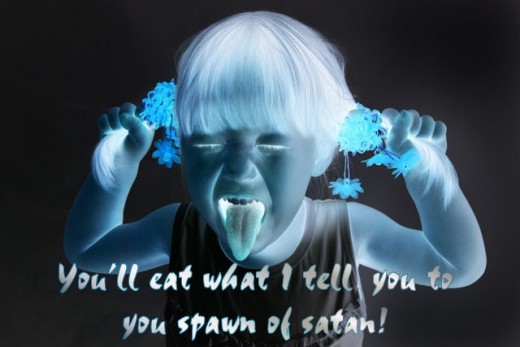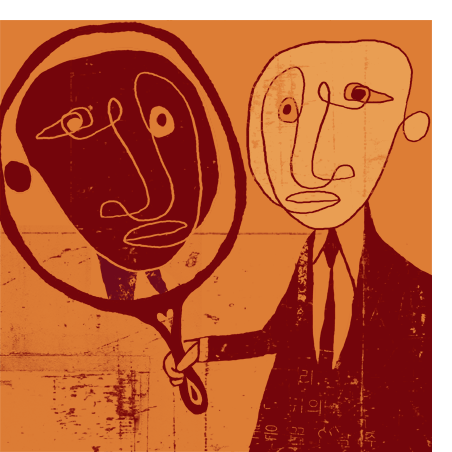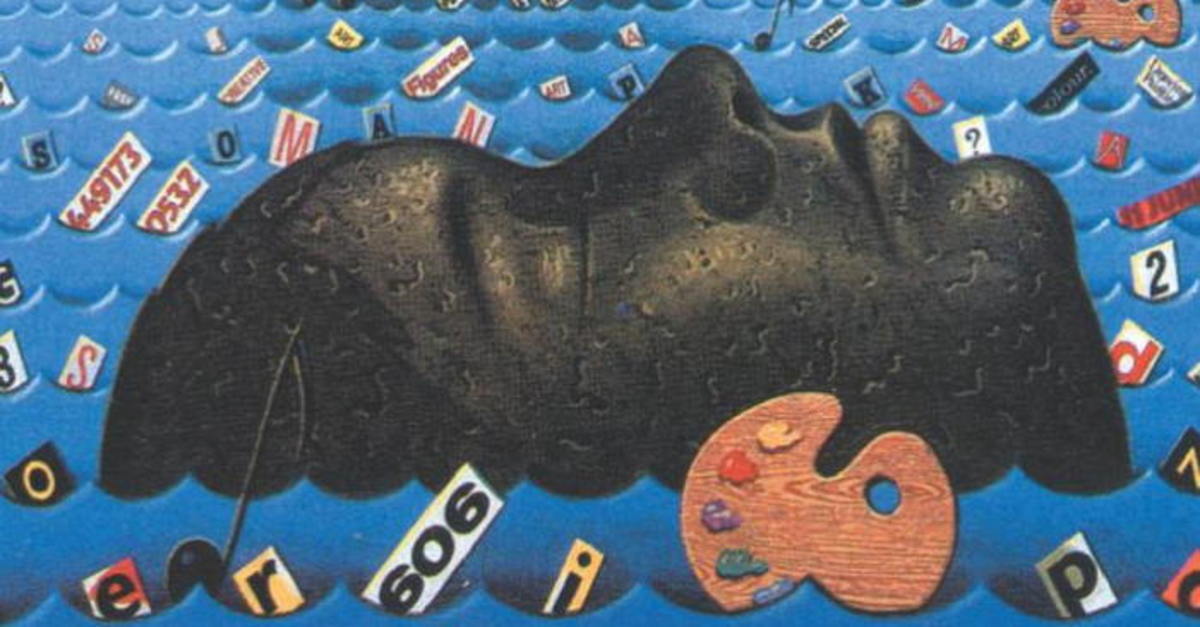The Deviant Mind

I'm intrigued by the role of will in one’s character and choices. How does it figure in madness and deviant behavior?
Ah -but what IS madness, you may ask? It is just having a viewpoint which deviates from a generally accepted one or is it something more visceral? What sets it off? Is it predestined or possibly preventable?
Whichever it is, madness or mental imbalance exists in various forms and to various degrees; and we need to remember that it does not necessarily lead to acts of violence or disruptive behavior. It may be primarily internal confusion and torture for the one suffering with it.
Sometimes it is abundantly clear that all humans possess some elements of it, in fact. The fabric of human development may have dropped a stitch or two along the way, but it is more probably individuality with its capability to exercise individual will, which is itself essentially a deviation from whatever might be considered a "norm".
It might be said that much creativity and intellectual excellence is a product of the tenuous borderline between sane and insane, bearing slightly on the deviant side of it.
But again, there may be a propensity in the form of serious mental imbalance which is attributable to genetic inclination. But authoritative influences while a personality is taking shape and vulnerable surely are the catalysts for a new person's emerging self-image. And if circumstances are imposed on a youngster which create a desperate enough need for escape, mental adjustments in the form of deviant imbalance or behavior may result.
At the base of much human aberrant behavior is the strong element of FEAR, a response to many stimuli and situations, one being confusion over what is expected of him and what can be delivered by him. If it is perceived as being negative expectations which can be delivered, the die may be cast. More, if self-hatred develops, more intensity is added to the delivery.
Perhaps Hitler, an insignificant little man who had accomplished little to distinguish himself and had failed to command respect or favorable attention in his normal mode, (plus is known to have hated his Jewish heritage), may have found a way to successfully demand respect, get attention and try to stamp out Jewishness via an extreme brand of violent madness. Whether it reaped favorable personal recognition or respectable power obviously didn't matter to him. It may have been exactly what his deficient self-image required.

So self-image plays a part and surely early parental influences, indeed, all major infuences which follow throughout a human being's development from birth to adulthood, make a dramatic difference in how the person's individuality develops. Such influences may or may not produce positive results.
From attitudes and actions toward an infant to personal words and body language expressed to a child, the individual forms an image of the person it is. Each repitition of either positive or negative input confirms its validity until the growing individual internalizes it and habitually behaves accordingly. Of all external influences upon a human’s self-image, none is more effective in shaping a young person's future. Next to strong genetic bents, the influence and input from parents’ and others with authority contribute in profound ways during a child's formative years.

There is something essential about being at ease and in sync with whomever one sees oneself as being, the perception upon which the self-image relies, be it a positive or a negative one.
Fulfilling a consistent image is essential to a developing personality whose behaviors and attitudes are still forming. When the image is positive and productive it is essential to help strengthen it because these perceptions of the self during the development years are being established and validated for the child by the reflections perceived in others' attitudes & treatment of him.
But If the reflections are negative and afford him no respect or trust in his worthiness, It becomes essential to his sense of balance to "fit" that bleak image, and deviations from it can be so upsetting that the child must seek the balance by acting out to fit them.
Of course, that is virtually guaranteed to lead to major adjustment & behavior problems when the self-image is negative. Though self-image is all "in the mind" of the person and may have little to do with reality, its nature is to maintain a balance with reality, even to the extent of creating a reality to fit itself. so if expected by self and others to be a "bad kid", behavior will be exercised to fit that image. Maintaining that balance is so essential that if the "bad kid" is credited with being a "good kid"when the self-image is convinced otherwise, extra effort to behave badly will be made, making it seemingly so, while multiplying the problems, confusion, distortion and frustration of the "bad kid" in progreas.
How is this possible?

Self-image becomes so entrenched and is such an essential to personality that the kid who's been told and convinced that he's a "bad kid" or a "slow learner" is easily agitated if suddenly he's assured he's a good kid & capable of normal learning, and will be impelled to go out of his way to restore the balance, even if it means altering his behavior and flunking his tests. ctua Al consequences of the altered behavior, however, are real, are painful and bear bitter fruits of their own.
The reason seems to be that a different image of self than that which was instilled shakes the very foundations of self on which he's learned to rely and to build. Bad behavior may not be his nature, but it became his self-image and the only way of asserting that only SELF he can recognize as true at all, is, in fact, primarily negative. Challenging it or changing it even for the better is traumatic.
Also by the same token, a kid who's always been assured of being a "good kid" and "a smart kid" and who has experienced respect and trust reflected in the attitudes toward him/her from others, feels confident in that self-image so that it becomes WHO he/she IS in his/her mind, which will be the image he/she will be impelled to verify by behavior. I like to think it is the true nature of most newborns and that the difference in results is due to the fluke of well-guided or misguided nurturing from then on.
All too often the negative input imposed upon a child from the authoritative "others" rests mostly on the others' own poor perceptions, agitation, or sour dispositions, rather than on the child's actual aptitudes and character, sad to say.
Bearing in mind that children are in process, if there are instances when a child is inattentive or behaves badly, it is wrong to impress those instances on him as a self-image which can affect the rest of his life.
Doesn't it say much about the clear importance of instilling and nurturing a positive sense of self from infancy and throughout the formative years of our children?

Usually no amount of contrary input from others can easily shake the self image in whichever direction it's been cultivated.
So even if it's a difficult one to maintain, bearing unpleasant consequences, as being "bad" and getting in constant trouble will be, it can produce bizarre reactions if the image is disturbed. Why?
It's as if to shout, "NO! - I'm me - it's not easy being me and I don’t like it, but if I'm not me, as you're telling me, then, who am I, what am I supposed to do? It's the only way I know to be or to act!" Try to imagine how frightening that must feel to a youngster with limited resources to explain or understand his distress, except by acting it out.
So for this person, there would be increased effort to restore and retain the "bad kid" self-image, resulting in more difficulties and yet more determined blocks against change.
If there were to be no further effective efforts to help dispel the "bad" image, it probably would just grow of its own momentum to becomes the reality for the person in order to comply with his self-image. It’s sad.
Another tragic possibility, though, is that the poor self-image can turn in on itself as self-hatred or discouragement, which will lead to despair, depression and even premature death. Possibly many teenage risks are expressions of just such desperation. Their outward show may be good looking and popular, but a deep-seated negative self-image can be lurking beneath it. Their risks may be cries for help. Sadly, the ideal time to remedy it was much sooner, all during their earlier development of self-image.
I'm very well acquainted with someone who, even fully grown and more, suffers in just such a way. It's incredibly deep-seated in spite of a lifetime of effort to resolve it and be free of it. Progress is made, only to slip back into the shadows. In his own words, progress means taking six steps forward and five back, with a net result of one step forward among the five excruciating backward steps. But it offers some hope and his will is determined to overcome it.

Fortunately the person who has a "good kid" self-image has few stumbling-blocks along the path, so that he/she continues to live up to that which is expected which further strengthens and verifies the positive self-image and its ability to function effectively. As continued reassurances of the "good" self-image that was originally instilled are received there will be ample evidence to combat negative distractions and detractors.
Also the nature of a positive self-image rests upon genuine self-assurance with diminishing dependence on others' approval.
By contrast, a negative self image continues desperately to need reassurance of being correct in believing itself bad and therefore must keep proving it and being recognized for it. There seems to be never sufficient proof to satisfy this unhealthy need.
The nature of a bad self-image rests uneasily upon insecurity and requires growing verification which only can be prompted by the evidence of more and worse ugly behavior. Meantime, the lifestyle will have produced conditions which are difficult or impossible to alter.
Of course, it can and sometimes does lead to revising of the self-image and reversal of the bad behavior. But also it can lead to such really destructive behavior that there is no escape.
Possibly even from his youth, Hitler was already progressing down that path?






